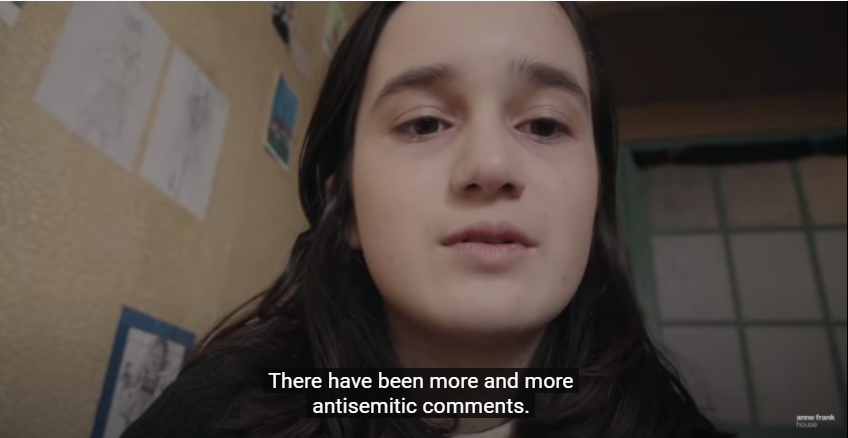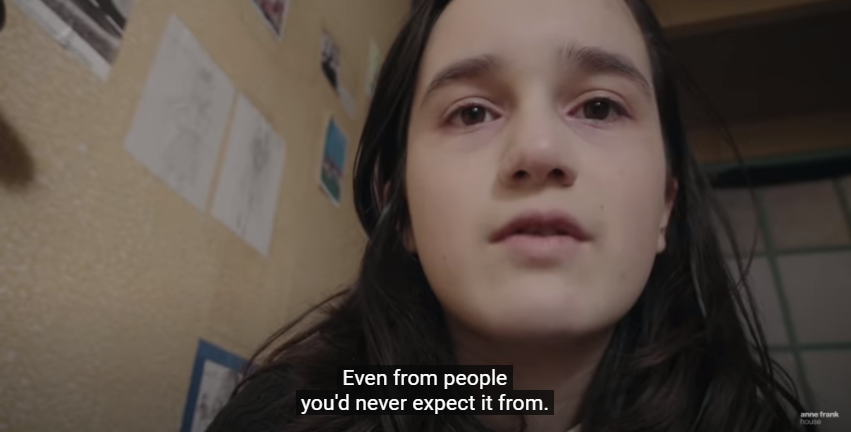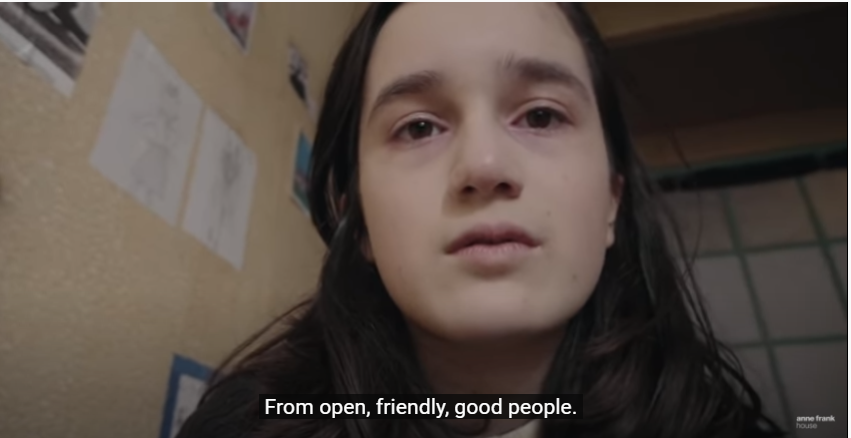We began the session with discussing their home assignment from which they were to give their thoughts on a statement that one of the students had made in the previous class—‘States usually do not support genocide’. Most students agreed that states do not actively support a genocide. However, many of them pointed out that there have been times when states did not assume an active role in preventing a genocide, which it could and should have.
cccIn the next segment, we showed them a clip from the Anne Frank video diary titled Hatred of the Jews. The screening was followed by putting forward the following questions—What are some of the instances of discrimination shown in the clip? This was a fairly straightforward question which drew a range of responses. Next, we asked: What would drive a child to say that she does not want to go back to her home country? The students responded to this saying that Anne could not reconcile with the fact that the country which she had believed to be her own since her earliest days had turned its back on them and made them feel threatened and unwanted. Then, drawing from a line in the clip, we asked them—’In fact, after the war I want to be both Dutch and Jewish’. Why does she say this? The response to this was largely that she wanted to be accepted on equal grounds as a Dutch, without any discrimination on the grounds of her identity of a Jew, both of which were intrinsic elements in how she saw herself. The final question in this segment was drawn from the clip where Anne says—’There have been more and more antisemitic comments. Even from people you’d never expect it from. From open, friendly, good people.’ What is the significance of this statement? Here, the students discussed how the hatred from people she would otherwise talk and spend her time with in her day to day life was what shook Anne the worst, particularly with reference to the bit where Anne says that she does not understand why the people of Netherlands who are known for their open minded and accepting nature have turned so hostile to the most marginalized Jews instead of welcoming them into their country. This is what perplexes Anne the most.
cccWe then gave them the Activity drawing from Resource 9 of the Anne Frank Tool Kit that lists a bunch of quotes from Anne’s diary and divided the students into breakout rooms, wherein each breakout room was given one quote to analyse. These are the questions that they discussed through their respective quotes: Why do you think Anne writes this? Is she being discriminated against? How? Drawing from this, describe an instance of discrimination that you have seen around yourself. After having discussed these questions in their groups, they all got back to the larger group and shared their responses as short presentations. This was a valuable exercise because they had spent some time reading and thinking about their respective quotes in their smaller groups. Most of them spoke about how Anne was being subjected to extreme oppression even for the most everyday things that we take for granted today—including going to school, seeing our friends as we wish. An important point that came up here was about the use of public spaces and how space assumes specific social meanings, which one otherwise doesn’t recognize, when we think about how Anne was prohibited from using the public spaces. Finally, the question about instances of discrimination that they have seen around themselves brought out a range of diverse thoughts and issues from gender, body shaming, caste and religion based discrimination to name a few.
-Rajosmita



